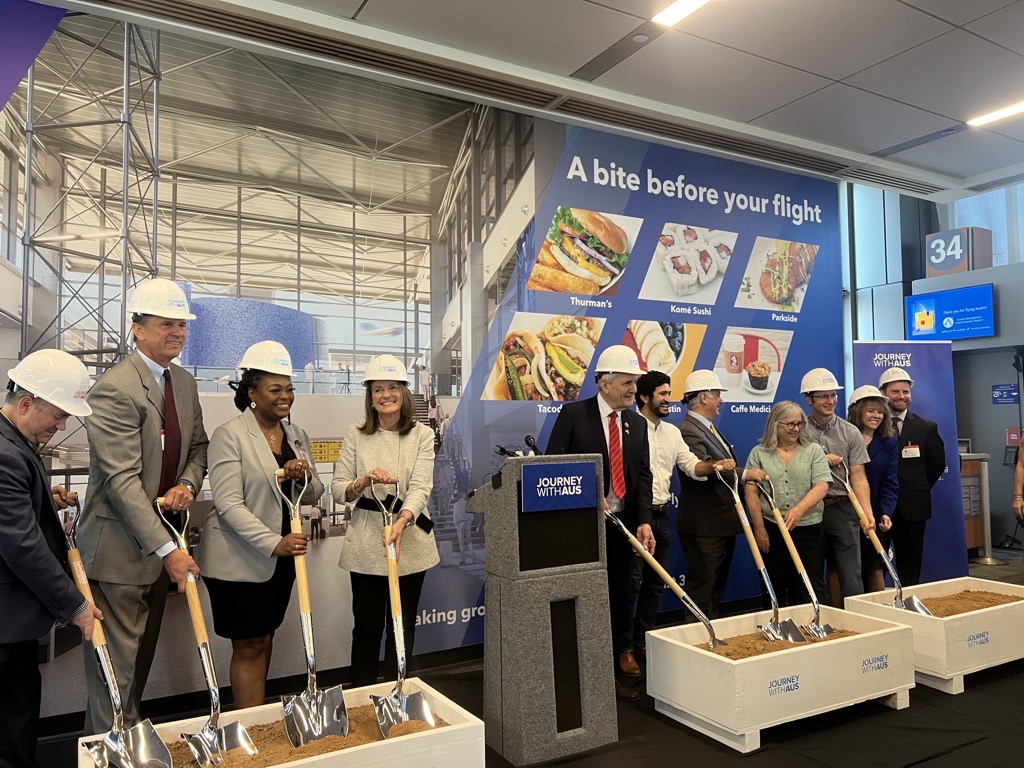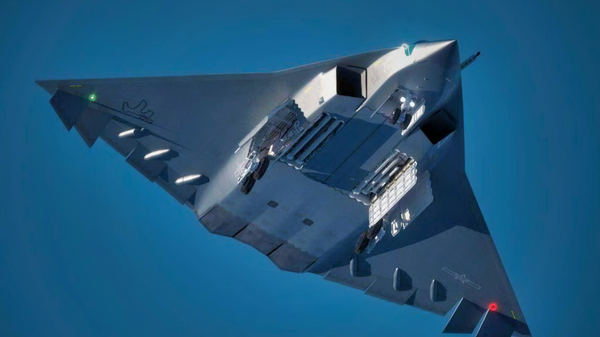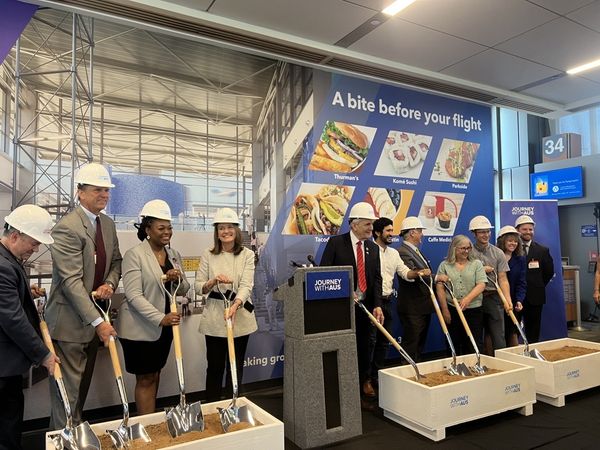Austin is becoming one of the most important cities in the US. Texas' capital city is now the country's tenth most populous city, with a population of nearly one million. The Austin metropolitan area has been the US' fastest-growing large urban area since 2011. Data from the US Census Bureau shows that Austin has added over 12,000 residents since the 2020 Census, while the metro area added almost 63,000 residents between 2021 and 2022.

Austin is an attractive place to live for several reasons. The city's tech industry, known as Silicon Hills, has created many high-paying jobs in startups and major tech companies alike. Other people are interested in the low cost of living, relatively mild weather, strong universities, outdoor lifestyle, and entertainment options. Austin's national influence, especially in the tech industry, now rivals major cities such as New York, Los Angeles, and Chicago.
However, one area that Austin could improve on is the aviation industry. Austin-Bergstrom International Airport (AUS) does not match airports found in other major U.S. cities. A city can only be influential with a strong aviation ecosystem, which is especially important as Austin becomes a major player in the global tech industry. The airport's problems include aging infrastructure, poor global connectivity, and not being a hub for the three major U.S. airlines. Let's look deeper at how Austin is improving its aviation industry.
Improving Airport Infrastructure
Austin has acknowledged the importance of having a large airport by announcing a project to expand AUS. Even though Austin is now among the US' ten largest cities, its airport was only the 27th busiest by passenger traffic in 2022. AUS is significantly behind Texas' two largest airports, Dallas/Fort Worth International Airport (DFW) and George Bush Intercontinental Airport (IAH), in passenger traffic and international connectivity. Austin plans to improve its airport to become as influential as Dallas-Fort Worth and Houston.
On August 30, government officials from Austin and other Central Texas cities announced the start of the West Gate Expansion. The $164 million project will add 84,500 square feet of space to the Barbara Jordan Terminal, which currently has 34 gates. According to city officials, the project is important because AUS is becoming "overwhelmed" with Austin's rapid growth.
The expanded terminal will include the following when complete:
- Three new boarding gates
- An outdoor patio on the third level with views of downtown Austin
- Five new seating areas
- New food and retail spaces, restrooms, public art, wellness rooms, and a children's play area
- The replacement of twelve boarding gate bridges
Austin's Mayor Kirk Watson said about the need for this project:
"This is just the start of a series of transformative airport projects that will modernize and improve the AUS experience for everyone. We know more is needed, and more is coming to make travel comfortable, exciting, and easy. The Journey With AUS will bring unique changes to the traveler experience as we navigate turning this 24/7 facility into an active construction site."

The project, with an estimated completion in spring 2026, will impact passenger traffic during construction. Authorities built temporary walls between gates 33 and 34 that will be replaced by a permanent one in spring 2024. Some gates will no longer have seating to accommodate the construction, but additional seats will be in other areas of the terminal. On September 14, the Austin City Council approved two measures to shorten the construction time and avoid disrupting passengers for longer than necessary.
The West Gate Expansion is not the only way Austin plans to improve its aviation infrastructure. The city launched Journey With AUS, a multi-year plan to turn AUS into "a catalyst for economic prosperity in Central Texas." Journey With AUS will ensure that the airport can handle rapidly growing passenger traffic, especially as people are interested in Austin as a tourist destination and a place to live.
The other components of Journey With AUS include the following:
- Adding 16,000 square feet to TSA Checkpoint 3 for six additional lanes and improved baggage handling
- A new jet fuel storage facility to meet the projected 3% to 5% annual increase in fuel demand over the next decade
- A new baggage handling system for outbound checked luggage that can process 4,000 bags per hour
- Adding 13,000 square feet of floor space for security screening and passengers waiting in line

The above improvements are expected to be completed within the next few years. Austin has also outlined several other projects envisioned for the longer term.
Expanding International Connectivity
Austin has little international connectivity compared to other cities of its size or importance. This is one area where Austin has a disadvantage over other major tech hubs such as Silicon Valley and New York City. The global nature of the tech industry means that people worldwide must be able to access Austin easily. Poor connectivity also presents a challenge for people interested in visiting Austin for major international events, including South by Southwest and the Formula 1 United States Grand Prix.
AUS offers nonstop flights to the following international destinations:
- Mexico City International Airport (MEX) on Aeroméxico's regional subsidiary, Aeroméxico Connect
- Toronto Pearson International Airport (YYZ) and Vancouver International Airport (YVR) on Air Canada
- London Heathrow Airport (LHR) on British Airways
- Tocumen International Airport (PTY) in Panama City on Copa Airlines
- Frankfurt Airport (FRA) on Lufthansa
- Calgary International Airport (YYC) on WestJet
The airport also has direct flights to multiple resort destinations in Mexico and the Caribbean on American, Southwest, and Spirit Airlines. Passengers from Austin who are interested in visiting other international destinations (or vice versa) must connect through another airport. Not offering enough international flights makes it difficult for Austin to reach the levels of other major tech hubs or even the two larger metropolitan areas in Texas.

Despite these challenges, Austin has outlined plans to improve. One part of Journey With AUS involves expanding the infrastructure for international travelers. Once this part gets out of the design process, the airport will eventually see new baggage carousels, additional line space, and processing booths. These improvements suggest that Austin aims to accommodate more international travel in the future.
As for new international flights, two airlines have announced new routes starting in 2024. Mexico's Viva Aerobus will launch direct flights from Monterrey International Airport (MTY) on March 22. The service, offered four times weekly, will connect Austin with one of Mexico's most important cities: Monterrey. Air Canada will introduce a route between Austin and Montréal–Trudeau International Airport (YUL) on May 3, also with four weekly flights.
Even though these new routes are to destinations in North America, Austin is showing its commitment to further international connectivity. AUS should add flights to Asia, the Middle East, and more European destinations to achieve its potential truly. Time will tell whether AUS will see more international routes, especially as Austin has outlined ambitious plans to improve its airport.
Austin's Future
Austin is a city that is becoming the forefront of the national conversation. It's not uncommon to see news about people moving to Austin or a large tech company establishing an office in the city. There's much to offer - relative affordability compared to major coastal cities, job opportunities, and mild winters - so it's understandable that people want to live there. Austin also has many activities for people visiting as tourists or on business trips.
Aviation is one area that Austin is determined to improve on to reach its full potential. Strong population growth is only sufficient if people can easily navigate the airport or access other destinations through direct flights. The city is expanding its aviation infrastructure and is starting to offer enhanced international connectivity.
Air France Suspends Paris-Manila Service for Summer 2026 » Memphis at Midnight: Inside FedEx's Global Superhub » Qanot Sharq Takes Delivery of First Airbus A321XLR to Transform Central Asian Long Haul Travel »
Comments (0)
Add Your Comment
SHARE
TAGS
STORIES Austin Texas AUS Expansion ProjectsRECENTLY PUBLISHED
 US Air Force to Launch New Experimental One-Way Attack Drone Unit
In a move that signals a tectonic shift in American airpower, the U.S. Air Force is preparing to stand up its first-ever experimental unit dedicated solely to "One-Way Attack" (OWA) drones.
NEWS
READ MORE »
US Air Force to Launch New Experimental One-Way Attack Drone Unit
In a move that signals a tectonic shift in American airpower, the U.S. Air Force is preparing to stand up its first-ever experimental unit dedicated solely to "One-Way Attack" (OWA) drones.
NEWS
READ MORE »
 Pentagon Alarm: China’s ‘Tailless’ 6th-Gen Fighter Prototypes Are Already Airborne
The Pentagon’s annual 2025 China Military Power Report (CMPR), released this week, has sent a clear signal to Capitol Hill: the race for air dominance is no longer a one-horse race. For the first time, the U.S. Department of Defence has formally acknowledged the rapid progress of China’s sixth-generation fighter programs, highlighting the successful flight testing of multiple "novel tailless" stealth prototypes.
NEWS
READ MORE »
Pentagon Alarm: China’s ‘Tailless’ 6th-Gen Fighter Prototypes Are Already Airborne
The Pentagon’s annual 2025 China Military Power Report (CMPR), released this week, has sent a clear signal to Capitol Hill: the race for air dominance is no longer a one-horse race. For the first time, the U.S. Department of Defence has formally acknowledged the rapid progress of China’s sixth-generation fighter programs, highlighting the successful flight testing of multiple "novel tailless" stealth prototypes.
NEWS
READ MORE »
 No "Mate's Rates" in the Sky as Qantas Bans All Staff (Including CEO) From New A350 First Class
In a move that signals just how "ultra" Qantas intends its new ultra-long-haul product to be, the Flying Kangaroo has made a rare and dramatic policy shift: barring all staff from its upcoming Airbus A350 First Class cabins.
NEWS
READ MORE »
No "Mate's Rates" in the Sky as Qantas Bans All Staff (Including CEO) From New A350 First Class
In a move that signals just how "ultra" Qantas intends its new ultra-long-haul product to be, the Flying Kangaroo has made a rare and dramatic policy shift: barring all staff from its upcoming Airbus A350 First Class cabins.
NEWS
READ MORE »



